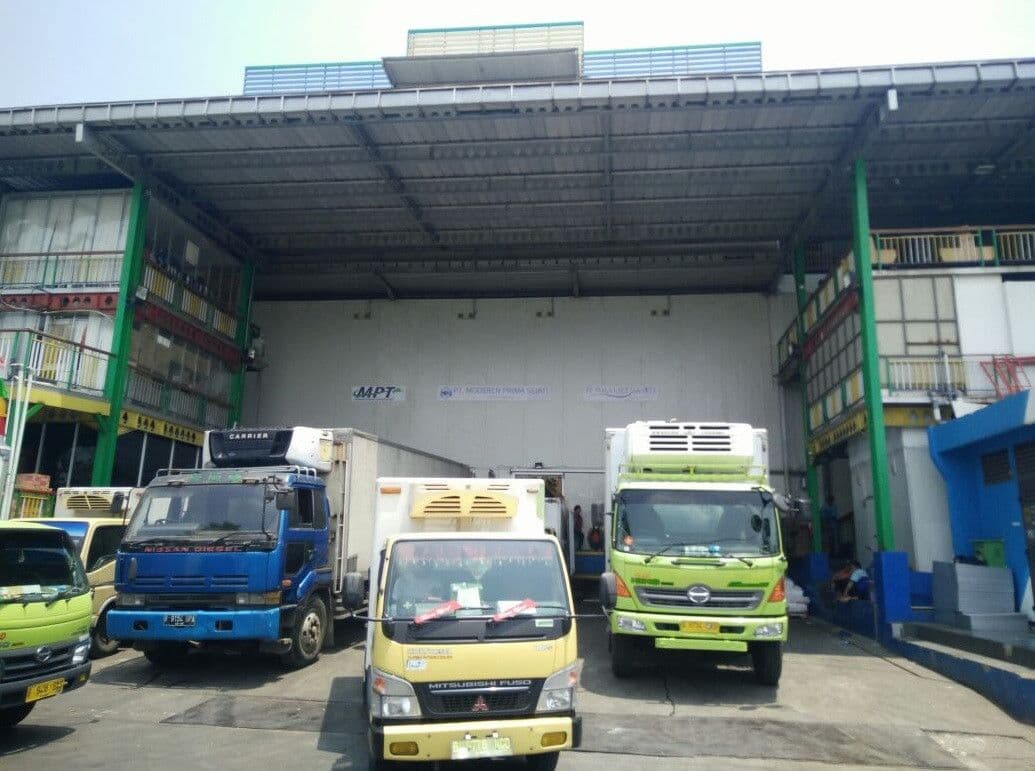
Cold Chain Logistics in Fisheries: Cold Storage & Refrigerated Trucks
Introduction
Fishery products are highly perishable goods. Without proper cold chain handling, fish can lose freshness within just a few hours.
Therefore, cold chain logistics has become a vital element in the fisheries business, from fishermen to the end consumer.
What is Cold Chain Logistics?
Cold chain logistics is a system of storing and distributing products at low temperatures to maintain quality. In the fisheries industry, its main components include:
- Cold storage – frozen storage warehouses.
- Refrigerated trucks / thermo trucks – temperature-controlled transportation.
- Blast freezers – for rapid freezing.
Functions of Cold Storage
- Store fish in frozen conditions from -18°C to -40°C.
- Enable stock management for HORECA supply & exports.
- Ensure food safety according to international standards.
Functions of Refrigerated Trucks
- Transport products from the port to warehouses, or from suppliers to hotels/restaurants.
- Maintain a stable temperature during transit.
- Reduce financial losses caused by product spoilage.
Challenges of Cold Chain in Indonesia
- Infrastructure is not evenly distributed.
- High investment costs.
- Frequent electricity issues in remote areas.
Business Perspective on Cold Chain Logistics
Cold chain logistics is vital infrastructure for maintaining fish quality across the entire supply chain.
- Competitive advantage: Suppliers with modern cold storage systems and refrigerated fleets are more trusted by HORECA, modern retail, and export markets, as they ensure products meet strict standards.
- Cost efficiency: While the initial investment (cold storage facilities, freezers, refrigerated trucks) is significant, in the long term it reduces losses from spoiled products.
- Market opportunities: With a strong cold chain, fisheries businesses can access high-value markets such as premium supermarkets, frozen food e-commerce, and exports to countries with strict regulations.
- Branding & reputation: Consistent product quality gives suppliers stronger bargaining power and positions them as professional partners for major buyers.
Fisheries Sector Perspective
For the fisheries sector, cold chain logistics is a crucial bridge between fishermen’s catches and high-value markets.
- Reducing food loss: Without cold storage, fish spoil quickly at ports or during distribution. With cold chain systems, catches can be stored longer, reducing waste.
- Increasing value: Fish stored under cold chain standards can be sold at higher prices, such as for export or five-star hotels.
- Supporting sustainability: Cold chain helps fishermen avoid selling fish at low prices under time pressure (due to rapid spoilage), ensuring more sustainable fisheries economics.
- Global market access: Many export destinations (Japan, Europe, U.S.) require certified cold chain systems. Without them, products cannot enter international markets.
Conclusion
Cold chain logistics is the backbone of fresh fish distribution. Without it, it is impossible to meet HORECA or export standards. Cold chain logistics is not just about storage and distribution technology—it is a business strategy, a quality guarantee for consumers, and a sustainability solution for the fisheries industry.
👉 Nalayan.id is ready to support the fisheries industry with our cold chain ecosystem.
We ensure fish supplies remain fresh from the port to the end consumer, for both local and export needs.
Contact us for reliable cold chain fisheries solutions!